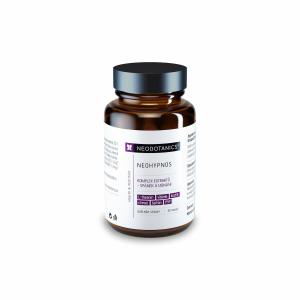
What is BPM and why is it important to monitor your heart rate

What Does BPM Mean and Why Should We Care?
You may have seen it somewhere – on the display of sports watches, on a treadmill at the gym, or in a heart rate monitoring app. The acronym BPM is now a common part of not only the sports world but also the health sector. But what exactly does BPM mean and why should we pay attention to this number even if we are not professional athletes?
BPM stands for "beats per minute," which is the number of heartbeats per minute. Simply put, it indicates how many times your heart beats in one minute. This value is called the heart rate and is one of the most important indicators of health. It can reveal a lot about how your heart functions, your physical condition, and sometimes even how stressed you are.
What is Heart BPM and Why Monitor It
Heart BPM – or heart rate – can vary significantly depending on age, health condition, physical fitness, or even mood. At rest, a healthy adult's heart rate is approximately 60 to 100 beats per minute. However, athletes can have a resting heart rate around 40 BPM, which is not a sign of illness but of good heart training. Conversely, a high resting heart rate can be a warning that the body is under stress, suffering from fatigue, or that something more serious may be happening.
In real life, this can manifest subtly. Imagine someone who decides to start running. Initially, a light jog might immediately raise their pulse to 170 BPM. After several months of regular training, they can run at the same pace and maintain a heart rate around 140 BPM. This decrease indicates that their cardiovascular system is adapting, the heart is working more efficiently, and the body is better prepared for exertion.
BPM is Not Just About Sports – What It Says About Our Health
While BPM is a key performance indicator for athletes, for ordinary people, it can be a valuable tool for monitoring overall health. Many doctors today recommend that patients monitor their heart rate not only during exercise but also at rest – for example, in the morning after waking up. This is when the heart activity is most calm and the values are most accurate.
An elevated resting heart rate – for instance, above 100 BPM – can be a warning. According to the American Heart Association, a chronically high resting pulse can increase the risk of heart disease, stroke, or even premature death. Conversely, a long-term low heart rate without a physical cause (such as in non-athletes) can be a sign of bradycardia, a heart rhythm disorder.
It's important to realize that heart BPM is not just a number, but a dynamic data point that changes over time, depending on how we feel, what we eat, how much we sleep, or whether we exercise. This is why many smartwatches and apps monitor it 24/7 and collect data that can be valuable for preventing health problems.
PR BPM – What Is It and How Does It Differ?
In some health apps or medical reports, we might also encounter the term PR BPM. What does it mean? PR stands for "pulse rate," which is the pulse frequency, once again referring to the number of beats per minute. In most cases, PR BPM is the same as the classic BPM, but in some specific situations (e.g., during heart arrhythmias), it may differ slightly. While BPM is measured directly from the heart (e.g., ECG), PR BPM is usually obtained from the pulse – that is, from the mechanical movement of the artery, which can be influenced, for example, by the loss of vascular elasticity.
From a practical standpoint, for the average user, the big difference between BPM and PR BPM is not important. Both values serve as a guide to how fast the heart is working and the condition of the cardiovascular system.
How to Monitor Your Own BPM and What to Take Away from It
Nowadays, there's no need to visit a doctor for every health metric. Many commonly available devices, such as smartwatches, fitness bands, or even some smartphones, can measure BPM in real-time. Apps like Apple Health, Google Fit, or Garmin Connect also offer the option to track heart rate changes over time, which is ideal for anyone who wants to have a better overview of their health.
If you want to get the most accurate measurement of your resting heart rate, just follow a few simple guidelines – the best time to measure is right after waking up, when the body is at rest and the heart rate is naturally low. Before measuring, avoid coffee, alcohol, and exercise; at least half an hour without stimulation is enough. And if you're using a smart band or watch, make sure the sensor adheres well to the skin.
A simple and reliable way to measure your heart rate without technology is to count the beats on your wrist or neck for 15 seconds and multiply the result by four. This will give you an approximate BPM value.
BPM in Different Life Situations
It is interesting how quickly BPM changes depending on psychological and physical states. For example, when a person hears stressful news, the heart can increase its rate in seconds. Conversely, during meditation or deep breathing, BPM often significantly decreases – and this ability to influence your own heart rate is the basis of many relaxation techniques.
In one study published in the journal Frontiers in Psychology, researchers found that mindful breathing and meditation can reduce resting pulse by up to 10 BPM in just 10 minutes. This shows how sensitively the heart responds to our lifestyle and emotional state.
Also, during sleep, BPM changes – in deep sleep, it can drop below 50, while during a nightmare, it can rise sharply. Athletes often monitor their nighttime BPM as an indicator of recovery: if the heart rate is higher than usual at night, it can be a sign of overtraining or an impending illness.
What Can Affect Heart BPM?
BPM is a variable that is influenced by many factors. The most common include:
- Physical activity – during exertion, BPM increases, after training, it gradually returns to normal.
- Emotions and stress – fear, anxiety, or joy can significantly speed up heart rate.
- Sleep and fatigue – lack of sleep increases resting pulse.
- Diet and stimulants – caffeine, alcohol, or sugar affect heart rate frequency.
- Health condition – fever, infections, or heart disease change BPM values.
- Age and fitness – with age, resting heart rate slightly increases, while training decreases it.
Try our natural products
The wide range of factors that influence BPM makes it an exceptionally useful indicator. It is not just "another number" from a watch – it is an insight into the inner workings of the body.
As German physician and founder of modern physiology Hermann Helmholtz said, "The heart is like a musical instrument – one can read harmony and disharmony of the body from it." And BPM is, in a way, the score of this internal music.
In today's world full of stress, lack of exercise, and fast-paced living, monitoring heart rate is a simple yet powerful tool to better understand your body. Whether you are exercising, relaxing, or just want to have more control over your health, BPM can provide valuable feedback. Therefore, it's worth thinking more about this small number than it might initially seem.



